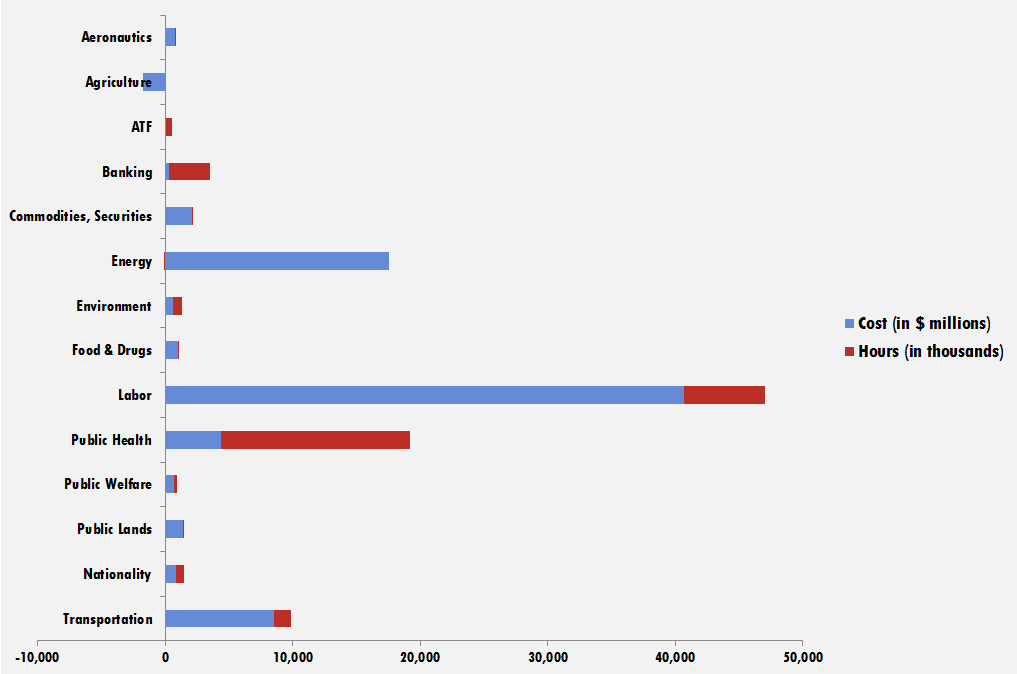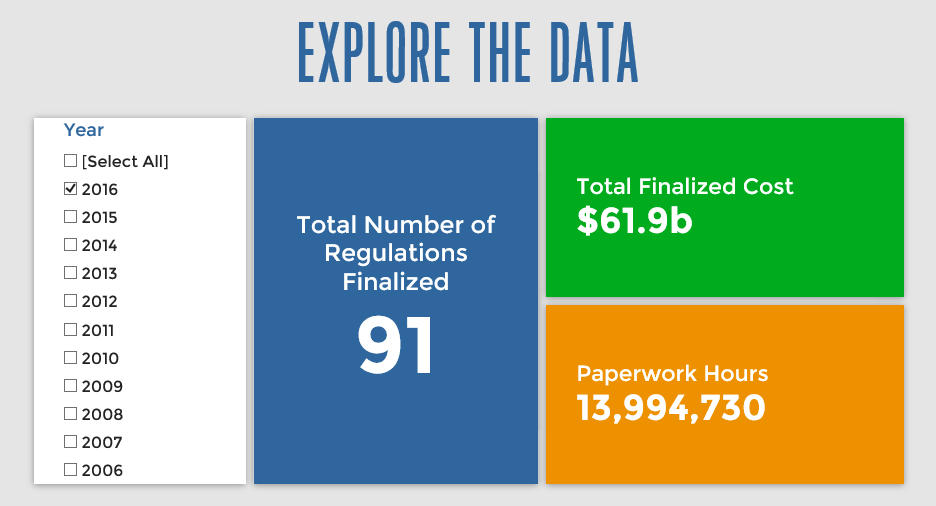Week in Regulation
April 11, 2016
Regulate Everything!
What did the federal government regulate this week? Investment advisors: yes. Corporate inversions: yes. The transportation of food: yes. Oil and gas pipelines: yes. Reporting requirements on the Outer Continental Shelf: check. After this incredible output, the week’s regulatory total topped $33.5 billion in costs, with 4.3 million associated paperwork burden hours. Annualized costs grew by $2.1 billion, compared to $3.6 billion in benefits. The per capita regulatory burden for 2016 is $240.
Regulatory Toplines
- New Proposed Rules: 55
- New Final Rules: 87
- 2016 Total Pages of Regulation: 20,856
- 2016 Final Rules: $61.89 Billion
- 2016 Proposed Rules: $15.7 Billion
The American Action Forum (AAF) has catalogued regulations according to their codification in the Code of Federal Regulations (CFR). The CFR is organized into 50 titles, with each title corresponding to an industry or part of government. This snapshot will help to determine which sectors of the economy receive the highest number of regulatory actions.
The behemoth of the week was easily the Department of Labor’s (DOL) so-called “Fiduciary” rule. As AAF reviewed here, the rule could impose up to $35.1 billion in long-term costs and millions of additional paperwork hours. Now the most expensive rule of the year, unintended consequences could easily force thousands of investors to go without retirement and investment advice.
Next up on the regulatory hit-list was the administration’s corporate inversion rule. Although the measure never monetized costs, it did list roughly 700,000 additional paperwork burden hours. As AAF noted, “At a time of chronic slow growth and poor productivity, it is unwise to build a regulatory wall against those companies who choose to invest, hire and expand in the United States.”
The administration also finalized a rule regulating the transportation of human and animal food. The measure covers transportation vehicles, operations, employee training, and records maintenance. Annual costs of the rule are $117 million, with 120,000 paperwork hours.
The third largest regulation of the week clocked in at $711 million, stemming from pipeline integrity verification and pressure tests. The Department of Transportation’s pipeline safety rule covers onshore gas transmission and would modify procedures for “onshore gas gathering lines.”
Affordable Care Act
Since passage, based on total lifetime costs of the regulations, the Affordable Care Act has imposed costs of $52.8 billion in state and private-sector burdens and 187.2 million annual paperwork hours (170.6 million from final rules).
Dodd-Frank
Click here to view the total estimated revised costs from Dodd-Frank; since passage, the legislation has produced more than 76.5 million paperwork burden hours and imposed $39.2 billion in direct compliance costs.
A Note on Paperwork
The Office of Management and Budget approved 80 paperwork requirements, increasing the paperwork burden by 197,132 hours. There were two major change to existing paperwork requirements (defined as an hourly burden increase or decrease of 500,000 or greater).
The largest increase in paperwork burden hours imposed by an information collection requirement (ICR) was 913,658 hours from EPA. The largest decrease in paperwork burden hours imposed by an ICR was 548,249 hours from the Securities and Exchange Commission.
Total Burdens
Since January 1, the federal government has published $77.5 billion in compliance costs ($61.89 billion in final rules) and has imposed 29.5 million in net paperwork burden hours (13.9 million from final rules). Click below for the latest Reg Rodeo findings.












